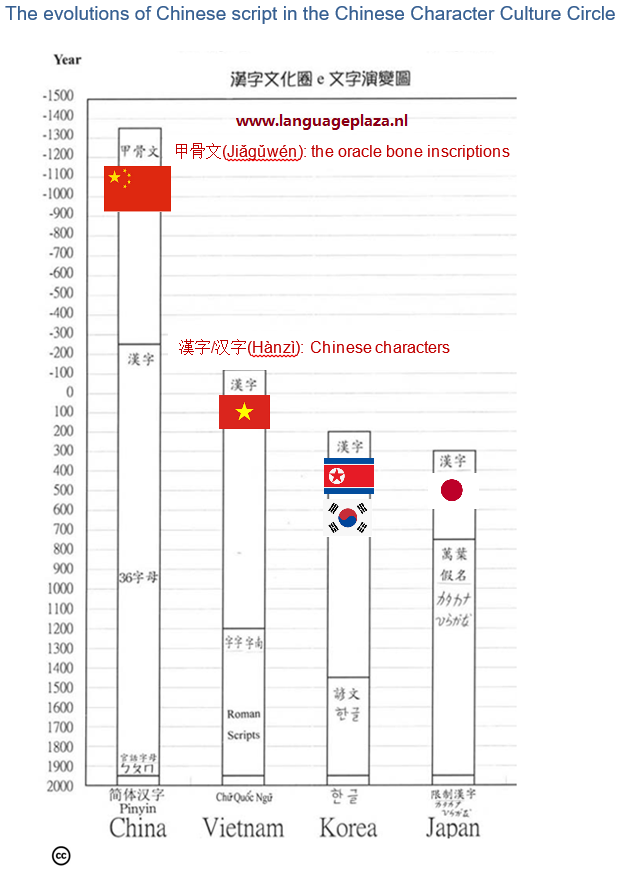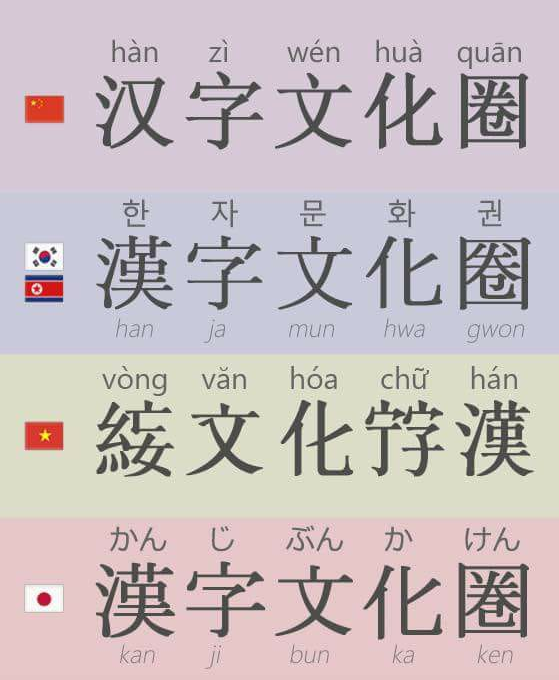The Cultural Circle of Chinese Characters
The countries in the CCCC: China, North Korea, South Korea, Japan, Vietnam, and Mongolia
Picture source: Wikipedia
The Cultural Circle of Chinese Characters (hereafter: CCCC), also known as the Sinosphere, the Sinic world, or the Sinitic world, refers to parts of East Asia and Southeast Asia that have been influenced by China and Chinese Han culture in history. It also refers to the surrounding countries or nations of China that have been colonized by the Chinese emperor or have made tribute to China in history. It is generally believed that the CCCC includes the following countries: China, North Korea, South Korea, Japan (including the ancient Ryukyu Kingdom), Vietnam, and Mongolia.
Classical Chinese language, a logographic script originating from ancient China, became an early regional lingua franca in the written form¹ and, as such, was a major facilitator of cultural exchange throughout the region. As you may see from the above picture on the left, the oracle bone inscriptions (Jiǎgǔwén 甲骨文) are considered as the origins of the Chinese characters. They are the marks engraved on tortoise shells and animal bones in the late Shang Dynasty (~1300 BC). Originally, they were used for divination by the royal family of China.
The current Chinese characters originated around 250 BC, after Emperor Qin unified all variants of scripts. 100 years later, Chinese characters were exported to Vietnam, then exported to Korea and Japan. Chinese characters are respectively called Hànzì in China, Kanji in Japan, Hanja/Hancha in Korea, and Chữ Hán Nho giáo in Vietnam. Languages and cultures are dynamic, after years' evolutions, Chinese characters were localized. The CCCC-countries have developed their own characters and writing system.
Japanese scholar 西嶋定生 (1919-1998) summarized the constituent elements of the CCCC as follows: 1) Chinese characters as the medium of communication, 2) Confucianism as the ideological and ethical foundation, 3) law and order system as the legal system, and 4) Chinese Buddhism as the religious belief as the common value standard². This summary has been commonly recognized by many scholars worldwide.
The common and historical features of the Great-CCCC countries (East and Southeast Asian countries) reflected in many aspects of social life and traditions, including traditional medicine, core beliefs, traditional buildings, etiquette, costumes, wedding customs, funeral customs, dietary pursuits and habits. For example, most people are used to eat rice, use chopsticks and drink tea.
The Inheritance of Chinese characters has driven the long-term cultural interactions. People inside the CCCC countries often can have a quicker and deeper understanding of each other's cultural creations, such as movies, novels and television series, comparing with people outside of the CCCC. The CCCC seems have acted as a kind of Babel Tower in bridging people and culture.
Source: 1.: Wikipedia.
2.: Baidu




